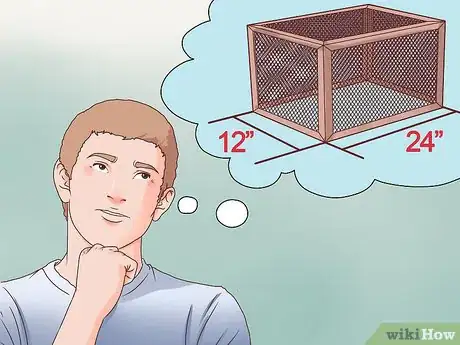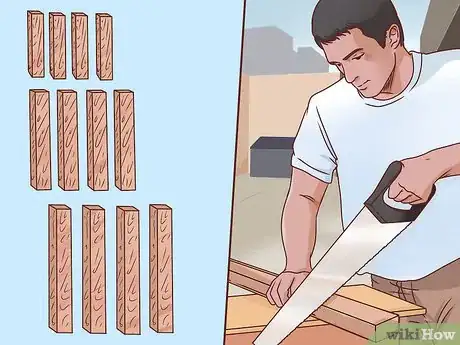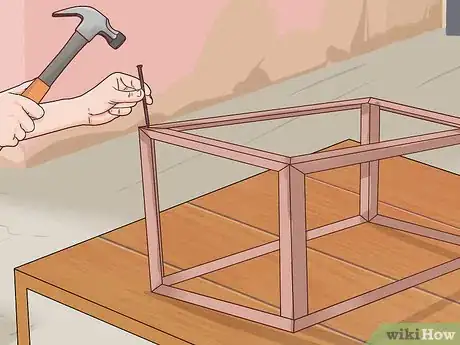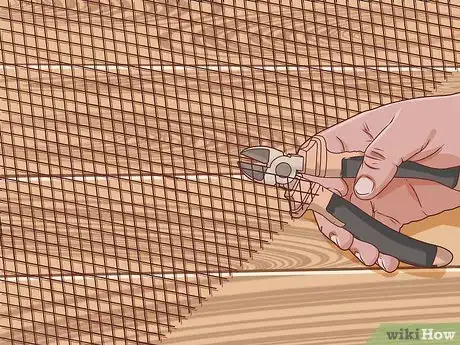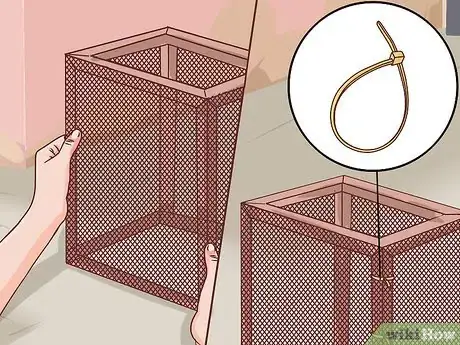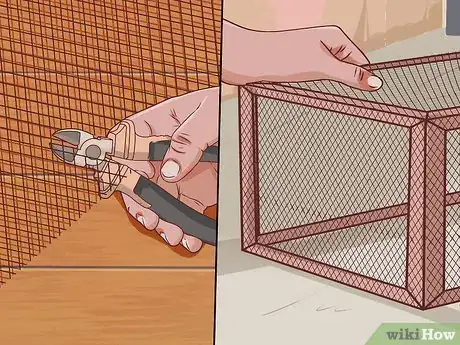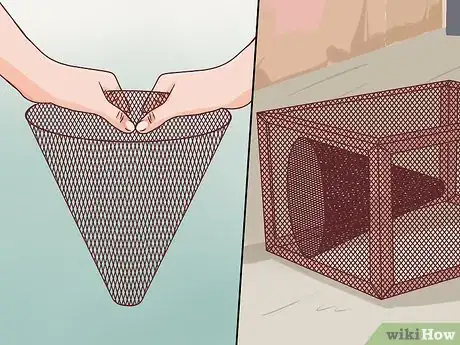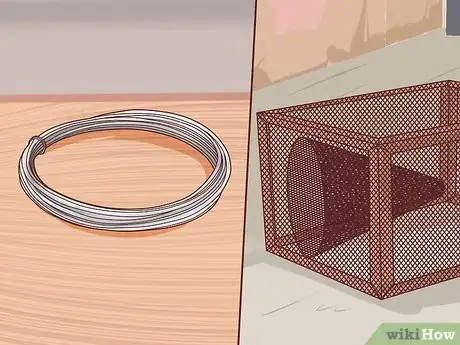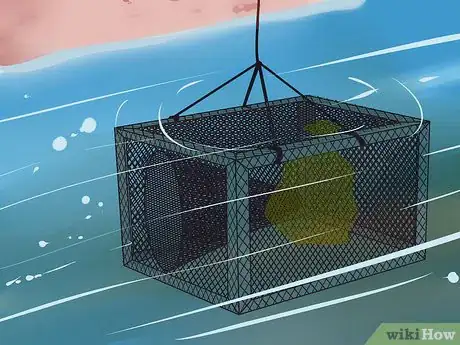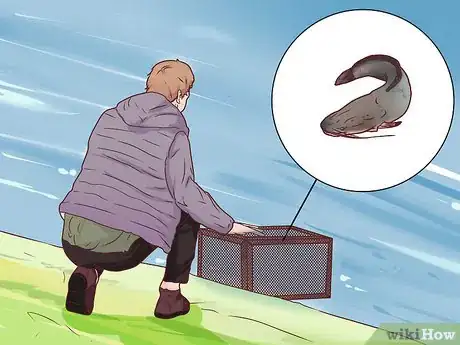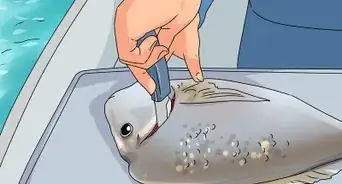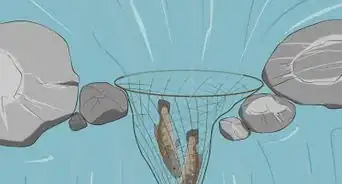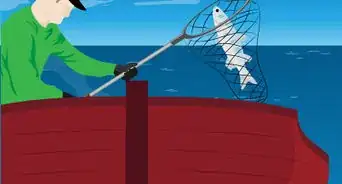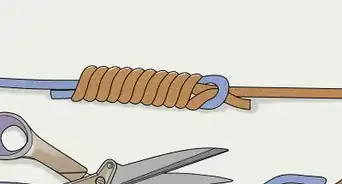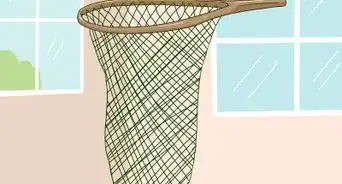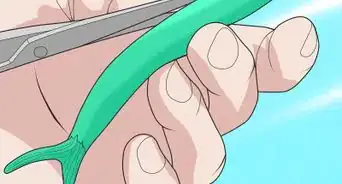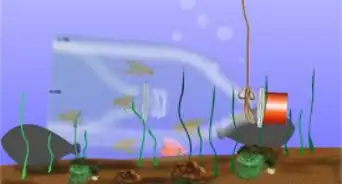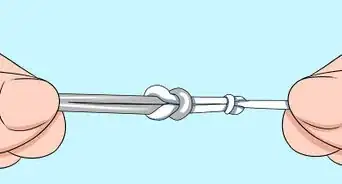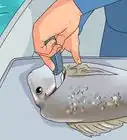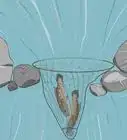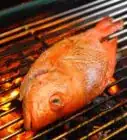wikiHow is a “wiki,” similar to Wikipedia, which means that many of our articles are co-written by multiple authors. To create this article, 28 people, some anonymous, worked to edit and improve it over time.
This article has been viewed 298,056 times.
Learn more...
Fish traps are used to catch a variety of aquatic species throughout the world, including shellfish such as shrimp and lobster from oceans and crawfish and catfish from lakes and streams. Check with your local fish and wildlife agency before using a fish trap, but if it's legal to use them, traps are very easy to make.
Steps
Determining Your Needs
-
1Decide on the dimensions of your trap. The size of the trap will vary depending on the fish you hope to catch and the waters you plan to trap them in. Minnows or pan fish for bait can be caught in a trap 12 inches (30.5 cm) by 24 inches (61.0 cm), while large catfish, carp and suckers require a much larger trap. You also want to be sure your trap is not taller than the depth of the water if you plan to use it in shallow areas.
-
2Choose a shape for your trap. Many are rectangular, with a 1:2:4 height, width, and length ratio, but cylindrical traps work well if there is not any current in the water to cause them to roll and become fouled.Advertisement
-
3Select the material you will use to build the trap. In Alabama, where trapping catfish is a long-standing tradition, craftsmen build the finest traps using white oak strips, woven together with galvanized steel or copper wire. Because such traps require considerable skill and time, it’s easier to build a trap with a wire mesh fabric or poultry netting.
- The choice then, is the mesh size, determined by the size of fish you are trapping. For bait minnows, a hardware cloth in 1⁄4 or 1⁄2 inch (0.6 or 1.3 cm) mesh is fine. For suckers or carp, poultry netting (chicken wire) is less expensive.
Building a Fish Trap
-
1Cut 12 pieces of lumber to build a box frame. You will need 4 pieces the length of your intended box, 4 pieces of your intended height and 4 of your intended width. For example, a trap that is 12 inches (30.5 cm) tall, 24 inches (61.0 cm) wide, and 48 inches (121.9 cm) long would require four 12 inches (30 cm) pieces of lumber, four 24 inch (61 cm) pieces and four 48 inch (120 cm) pieces. Larger or smaller traps would require the same amount of longer or shorter lumber pieces, respectively.
-
2Create a box frame with the 12 pieces of wood.[1] Arrange the pieces in the shape of a cube. First create 2 squares with the smaller lengths, with similar-sized pieces parallel to one another. After you nail the 2 squares together, connect them with the 4 longer pieces of wood, creating a box frame.
-
3Cut the wire mesh large enough to fold around the box.[2] Be sure you allow for some overlap at the seam. A 12 inch (30.5 cm) by 24 inch (61.0 cm) by 48 inch (121.9 cm) trap will require a sheet of wire 6 feet (1.8 m) long and 4 feet (1.2 m) wide.
-
4Fold the wire mesh around the longer sides of your box frame. Create a 90-degree corner around each slat of wood by folding the mesh around the outer corner of your frame.[3] Tie the 2 edges of the sheet together with plastic "snap ties" or light gauge wire.
-
5Cut another piece of wire fabric for 1 end of the box. The piece would be a 12 by 24 inch (30 by 61 cm) rectangle in this example. Secure the sheet in place with the same ties or wire you seamed the box in the previous step. A larger or smaller trap will require wire fabric equal to its width by its height.[4]
-
6Form a funnel to place at the other end of the box. Use the same type of wire mesh. The larger funnel opening should be large enough to attach it to the slats of your box, tapering down to leave an opening facing the inside of the box that is just large enough for your target fish to swim into the trap, but not escape.[5]
- In this example, the larger side of the funnel could be a 12 by 24 inch (30 by 61 cm) oval, and the smaller end might have a diameter of only 5 inches (13 cm), varying based on the size of fish you hope to trap.
Using a Fish Trap
-
1Bait the trap. Place a spawn net filled with your bait into the trap, along with a large stone or piece of brick to weigh the trap down. Common bait used for catfish is chicken liver, corn, or even dog food. Other fish species should be baited with food they find most attractive.[6]
- If you don’t have spawn net or another mesh cloth, you could use an onion bag or mesh fruit bag.
-
2Secure the funnel. Instead of using zip ties, use wire that can be untied later to release or remove your catch, then retied for future use.[7]
-
3Tie an anchor rope to the trap. Anchor rope, available from outdoor sporting stores, will withstand its time underwater and is strong enough to withhold the weight of the trap and any fish inside. You will use the rope to pull your trap out of the water when you are ready to check it, so it should be at least 15 feet (4.6 m) long.[8]
- You could use twine rope in place of the anchor rope, but it isn’t as strong or durable.
-
4Place the trap. Take the whole apparatus, including the bait inside, to the fishing hole you plan to place it. Then simply drop the trap in the water in your chosen location. Secure the other end of the rope on the bank.[9]
- If you’re trying to catch catfish, place the trap near their spawning grounds when the catfish are spawning.
-
5Check the trap periodically. Pull the trap in slowly when you decide to check it, keeping in mind you never know what will be inside it. At the least, check the trap daily to make sure no turtles, otters or other predators have discovered it and either damaged it or gotten trapped inside.
- If you’re using a crab ring, pull the trap in as quickly as possible so the crab aren’t able to escape. Situate yourself downstream of the current to make the trap easier to pull out of the water.
References
- ↑ http://www.fao.org/docrep/004/x2590e/x2590e07.htm
- ↑ https://nogreaterjoy.org/articles/making-a-fish-trap/
- ↑ http://www.fao.org/docrep/004/x2590e/x2590e07.htm
- ↑ http://www.fao.org/docrep/004/x2590e/x2590e07.htm
- ↑ http://www.fao.org/docrep/004/x2590e/x2590e07.htm
- ↑ http://www.fao.org/docrep/004/x2590e/x2590e07.htm
- ↑ https://nogreaterjoy.org/articles/making-a-fish-trap/
- ↑ https://www.trails.com/how_32865_use-catfish-traps.html
- ↑ https://www.trails.com/how_32865_use-catfish-traps.html
Expert Q&A
Did you know you can get expert answers for this article?
Unlock expert answers by supporting wikiHow
-
QuestionA funnel has 2 sides or openings; if a fish can enter by the smaller opening then can't it exit by the same or other opening?
 Kody LeeKody Lee is a Guide for Fishing Trips in Washington. He has worked as a guide since 2015 and has fished his entire life.
Kody LeeKody Lee is a Guide for Fishing Trips in Washington. He has worked as a guide since 2015 and has fished his entire life.
Guide, Fishing Trips
-
QuestionWhat size nails should I use?
 Kody LeeKody Lee is a Guide for Fishing Trips in Washington. He has worked as a guide since 2015 and has fished his entire life.
Kody LeeKody Lee is a Guide for Fishing Trips in Washington. He has worked as a guide since 2015 and has fished his entire life.
Guide, Fishing Trips
-
QuestionHow do the fish stay in the fishing trap?
 Community AnswerThe fish and other creatures will discover the wider end of the cone entrance and swim in. Then, they simply won't be smart enough to swim back to the smaller end of the cone to exit.
Community AnswerThe fish and other creatures will discover the wider end of the cone entrance and swim in. Then, they simply won't be smart enough to swim back to the smaller end of the cone to exit.
Warnings
- Mark the location where you set your trap. Some jurisdictions will allow you to trap fish, but require either your license information or name, address, and phone number to be tagged on your trap.⧼thumbs_response⧽
- State laws vary on the size traps, licensing requirements, and types of fish you can trap. Check with your local fish and game department for specific regulations where you are fishing. Do not use a fish trap in illegal waters.⧼thumbs_response⧽
Things You'll Need
- Scrap or small lengths of lumber
- Hammer
- Small nails
- Wire mesh fabric
- Wire snips
- Plastic ties or flexible wire
- Measuring tape
- A spawn net
- Bait
- Anchor rope
About This Article
The best way to make a fish trap depends on what you fish for. Make a smaller trap if you fish for minnows or pan fish. Make a larger trap if you fish for catfish, carp, or suckers. Arrange 12 pieces of lumber into the shape of a cube and nail them together with a hammer. Wrap wire mesh around 3 sides the frame if you fish for minnows or pan fish, and wrap poultry netting around the 3 sides if you fish for catfish, carp, or suckers. Secure the mesh or netting to the edges of the frame with snap ties. Then, create a funnel with the mesh or netting and use it to cover the open side of the cube. To learn how to use the trap, read on!
